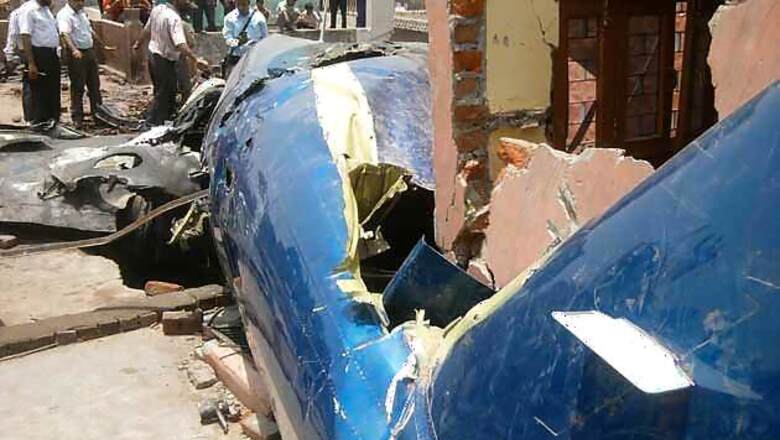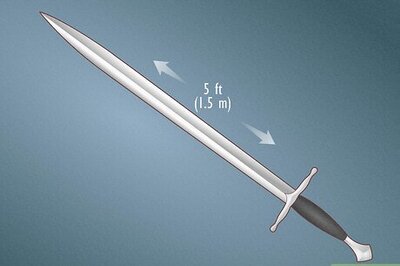
views
New Delhi: A probe into last year's crash of an air ambulance in Faridabad has found that strong gust of wind and very rough weather had caused the accident that claimed 10 lives, including that of a patient it was carrying to Delhi from Patna.
The small Pilatus PC-12 aircraft, which was converted into an air ambulance, had crashed into two houses in the Parvatia colony of Faridabad at 10:43 pm on May 25. While two pilots and five passengers, including two doctors and the patient, were killed, three residents also lost their lives on ground.
"It is probable that a series of up and down drafts, turbulence (moderate to heavy) and in dark night conditions caused the crew to become disoriented", leading to mishandling of controls that caused the aircraft to enter into a spin and crashing, the probe report said.
While positioning itself on to the approach path for landing, the aircraft started losing height very rapidly barely five-seven minutes before the crash, it found.
The single-engine turboprop passenger and cargo aircraft, manufactured by Pilatus Aircraft of Switzerland, was not equipped with Flight Data Recorder or Cockpit Voice Recorder.
Without the black box, the probe was carried out with the help of the wreckage, air traffic control data, weather condition, the departure from the flight (approach) path and other factors.
The probe team, however, found that the plane was in airworthy condition to undertake the flight and had sufficient fuel on board. Its maintenance was carried out in accordance with the approved programme and no snag was reported before the accident.
"The rapid onset rate of the spin and high descent rate resulted in the crew being unable to recognise the phenomenon, which they were experiencing, perhaps for the first time.
"This probably caused them to react erroneously resulting in an aggravation of the situation and ultimate loss of control till impact with the ground," the inquiry, set up by the DGCA, found.
The inquiry found that the small aircraft "was hit by a strong gust", resulting it to turn left and then stall. Emergency message - "Into Bad Weather" - was received twice by the air traffic control at 2240 hours and 2241 hours.
Thereafter, the ATC stopped picking up the aircraft on the radar and repeated attempts to contact it on Very High Frequency radio failed to get any response.
In conclusion, the inquiry said, "The probable cause of the accident could be attributed to departure of the aircraft from controlled flight due to an external weather-related phenomenon, mishandling of controls, spatial disorientation or a combination of the three".



















Comments
0 comment